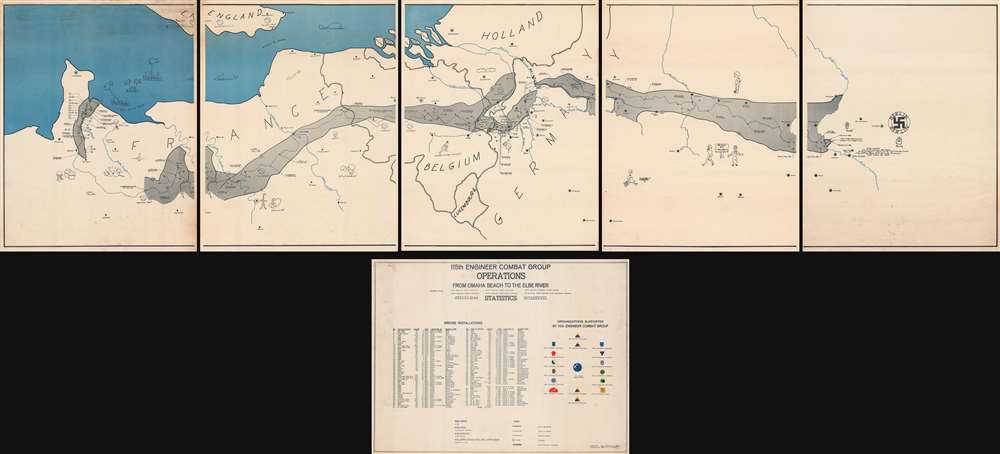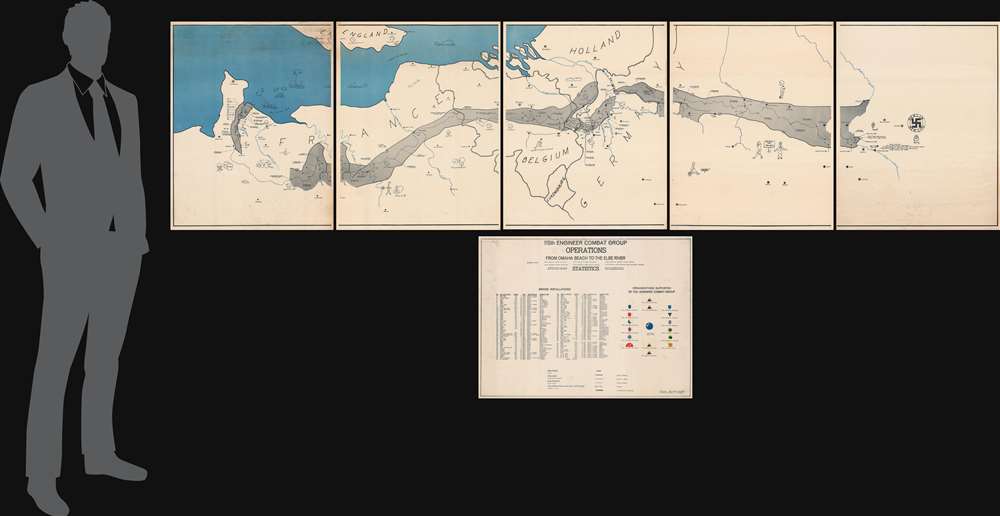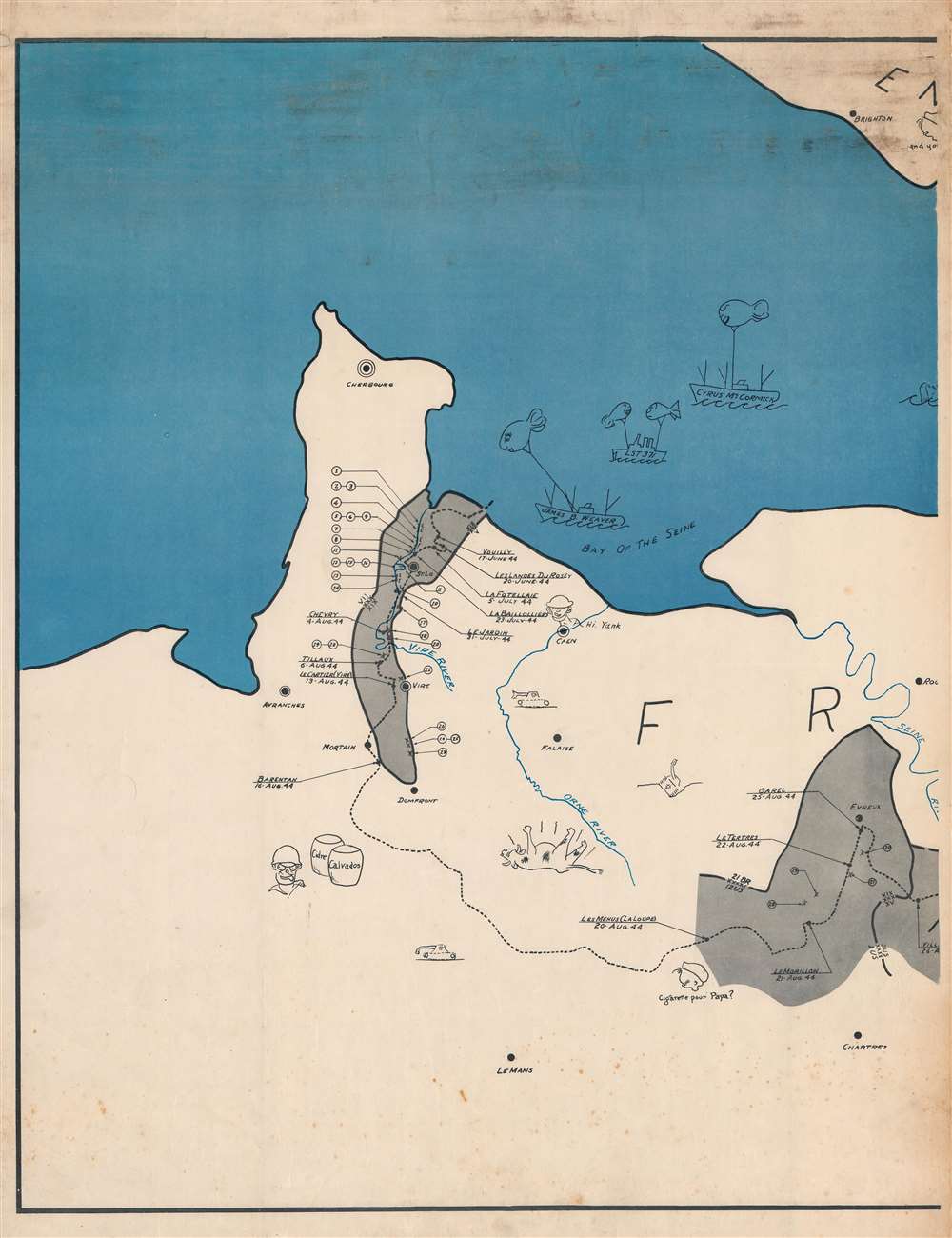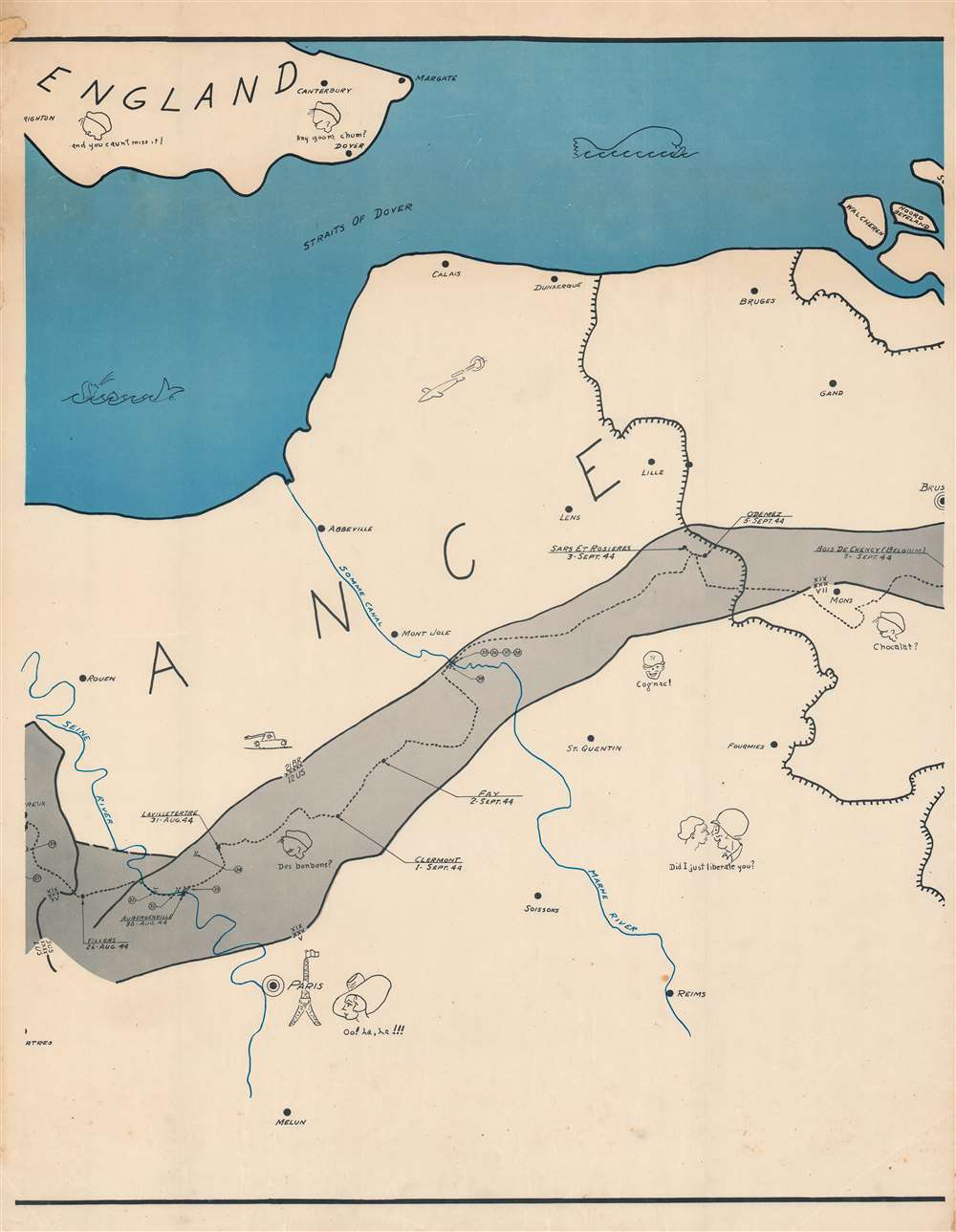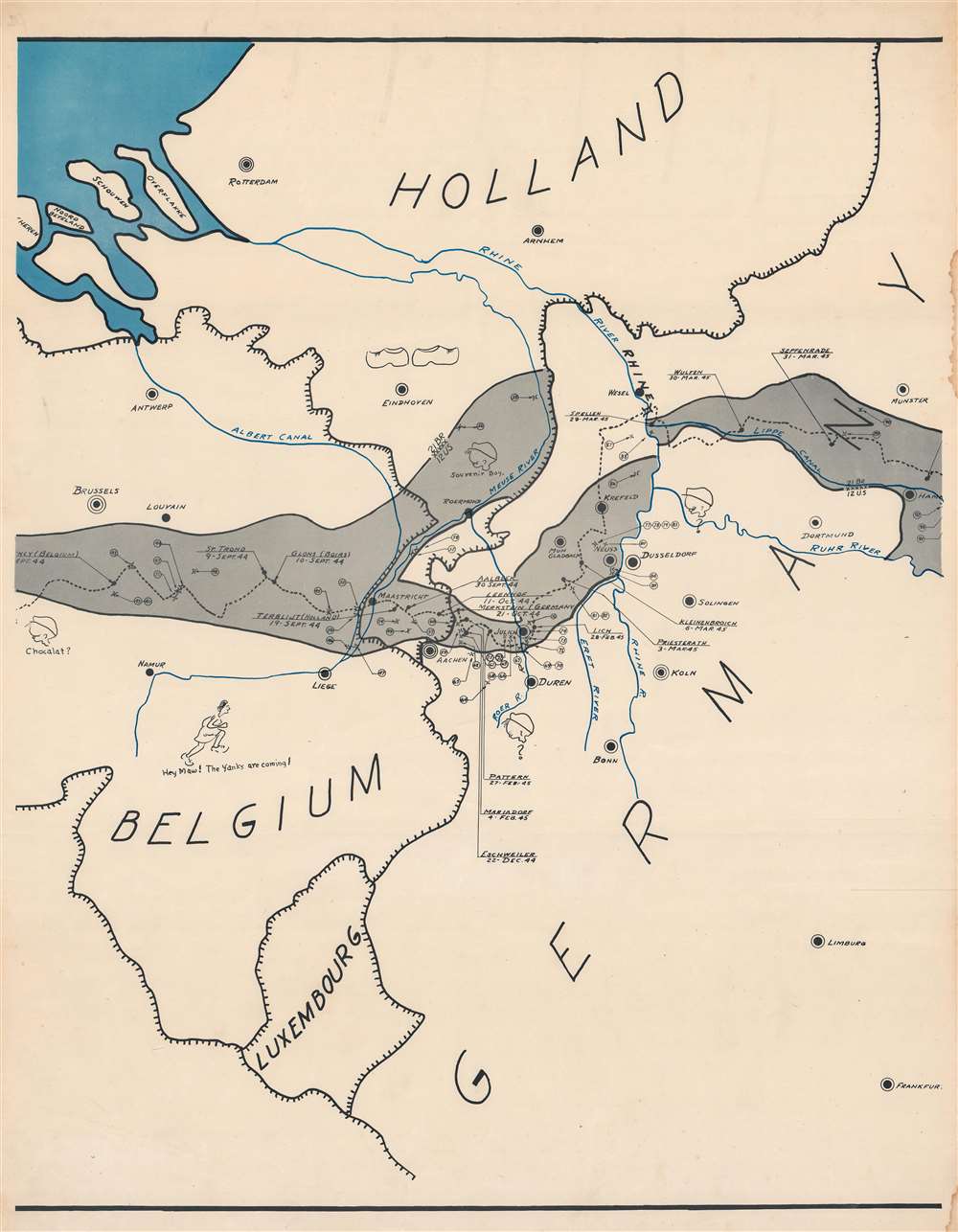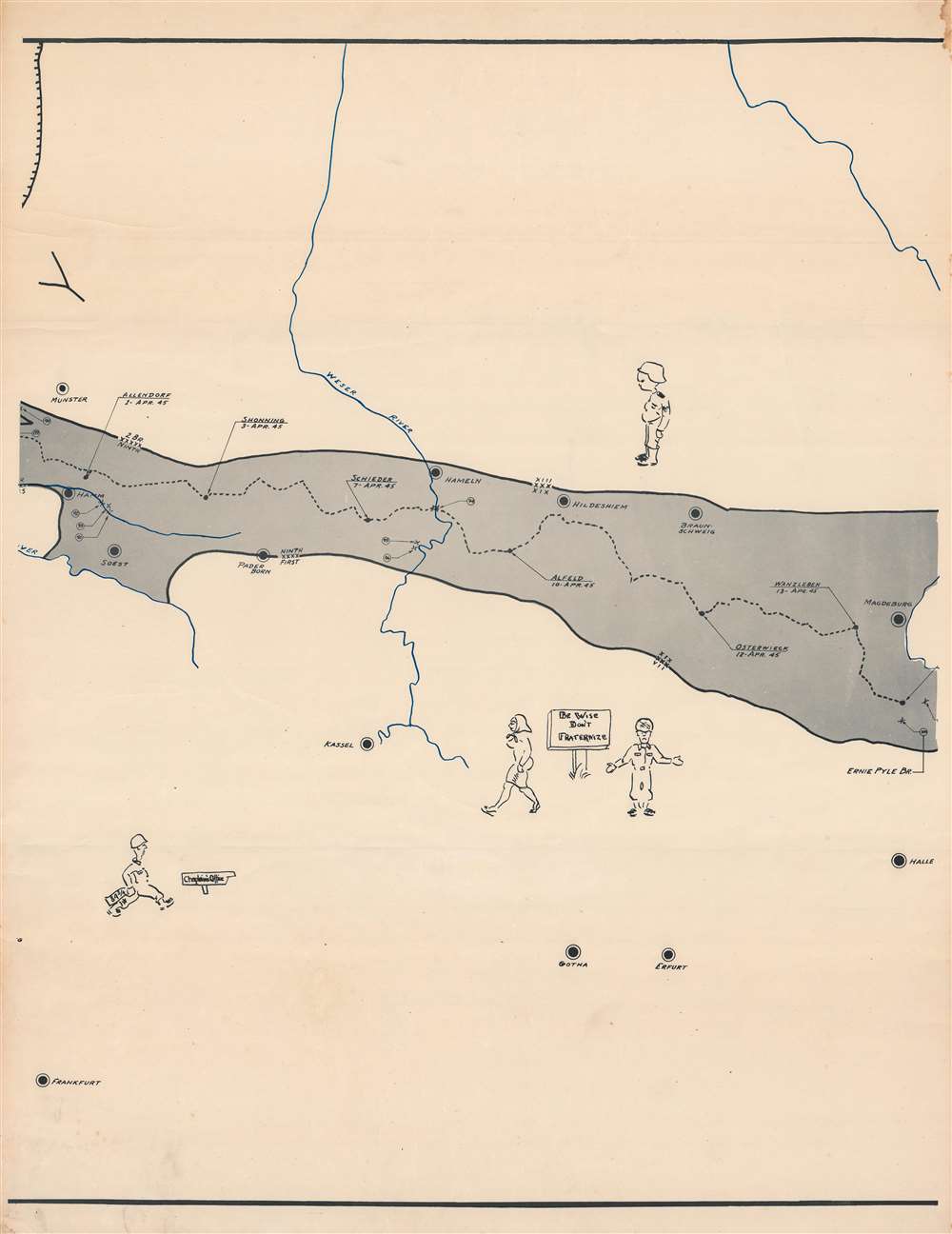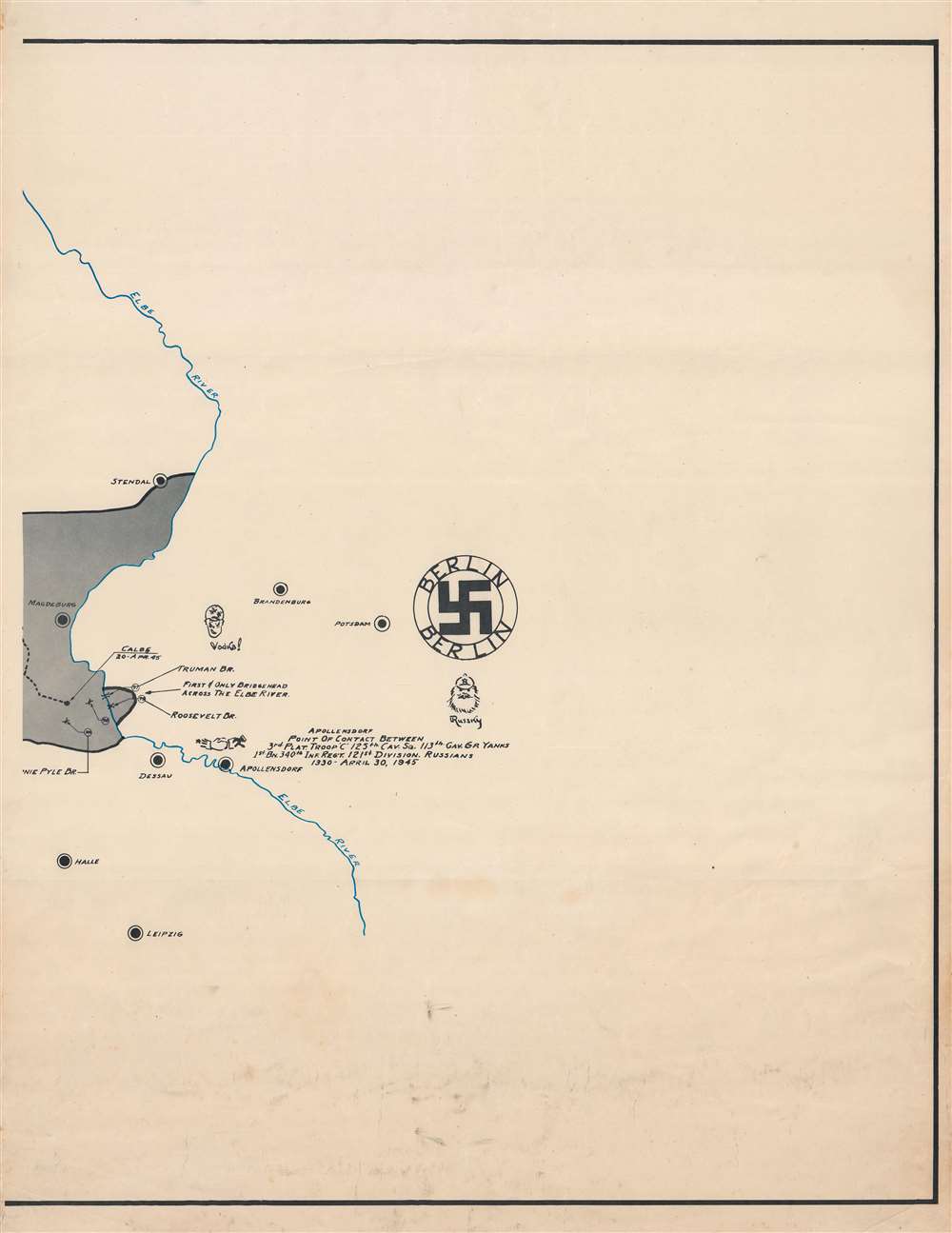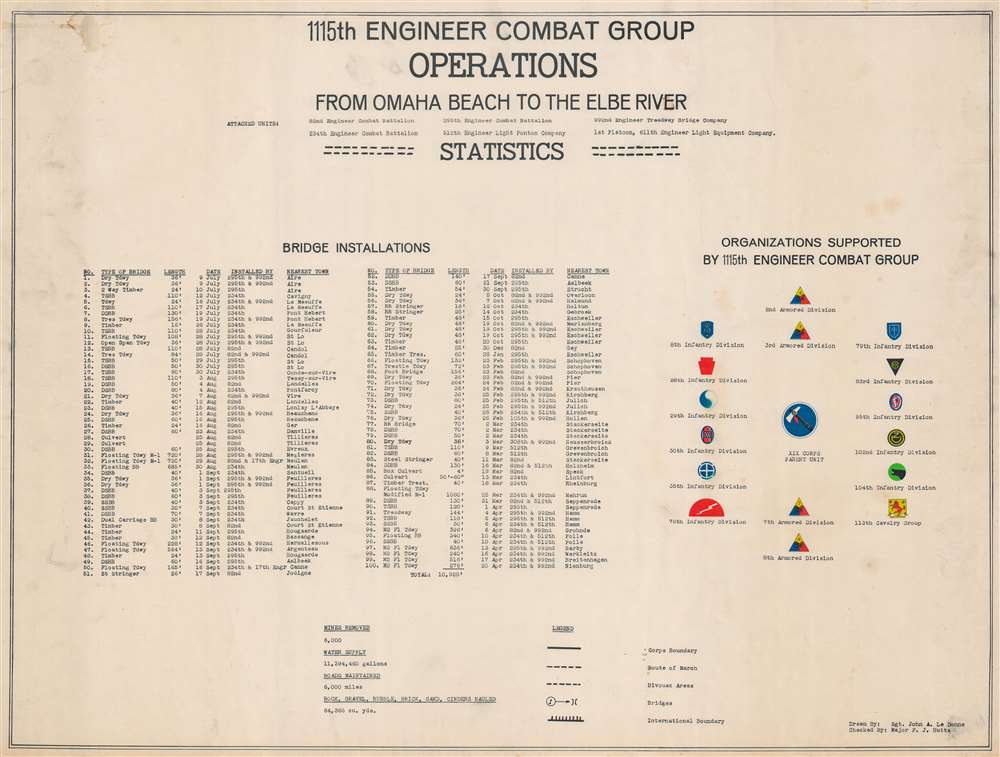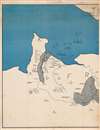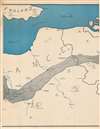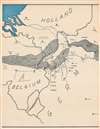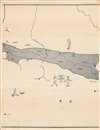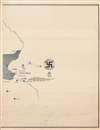This item has been sold, but you can get on the Waitlist to be notified if another example becomes available, or purchase a digital scan.
1945 LeDonne Map of Europe and the 1115th Engineer Combat Group During World War II
1115EngineerCombatGrp-ledonne-1945
Title
1945 (undated) 27 x 106.25 in (68.58 x 269.875 cm) 1 : 550000
Description
A Closer Look
Areas shaded gray highlight where the 1115th operated: from Normandy through northern France, Belgium, and into Holland before traversing Germany to the Elbe River. The dashed line follows the 1115th 'route of march'. Underlined town accompanied by dates likely refer to the 1115th's establishment of command posts as it fought across the continent. 100 numbers in circles mark where units attached to the 1115th built bridges. These correspond with an index on the sixth sheet, which notes the type of bridge built, its length, the date of construction, and the nearest town. Some bridges were built at the same location twice, suggesting they were destroyed and rebuilt. Major cities included to provide geographical context.Pictorial Vignettes
Like many World War II route maps, LeDonne uses pictorial vignettes to highlight wartime experiences. Many depict children asking for candy, chocolate, cigarettes (supposedly for their father), or other things. The Eiffel Tower appears below the route of march, suggesting the men dreamed of seeing Paris. References to local alcohol (calvados and cognac) appear next to comic caricatures of inebriated soldiers.'Be Wise Don't Fraternize'
One of the most common themes in these maps, fraternization, appears in a few places here. A portrait of a French woman appears next to the Eiffel Tower and exclaims 'Oo! La, La!!!' while looking at the tower. Further east, a wide-eyed and very excited G.I. stands nose to nose with a woman and says 'Did I just liberate you?', obviously hoping for a show of amorous 'gratitude'. The third reference, firmly in Germany, is woman walking away from a disappointed and confused G.I. Between them a sign reads, 'Be Wise Don't Fraternize'.World War II Route Maps
Maps tracing unit movements were created by American and British forces both during and after World War II. The genre is aesthetically broad, ranging from the purely functional with just placenames and dates, to the artistic, to the comic. Many combine the three engendering a visually striking and historically informative summary of a unit's peregrinations.Publication History and Census
This map was drawn by the Sergeant John A. LeDonne and checked by Major F. J. Hutta. This map is not cataloged in OCLC, and we have not found any other cataloged examples. We are aware of only one other example in private hands. Rare Book Hub notes a single instance of this map at auction.Cartographer
John Anthony LeDonne (March 4, 1912 - June 28, 1992) was an American engineer and U.S. Army World War II veteran. LeDonne lived in Pittsburgh, Pennsylvania, for most, if not all, of his life. He was working at the A. H. Mathias Blue Printing Company in Pittsburgh when he signed up for the Selective Service in October 1940 and was inducted into the Army as an engineer on September 1, 1943, and eventually became a member of the 1115th Engineer Combat Group. He served in Europe from March 11, 1944, until he returned to the United States on December 26, 1945, and was discharged on January 1, 1946. More by this mapmaker...

